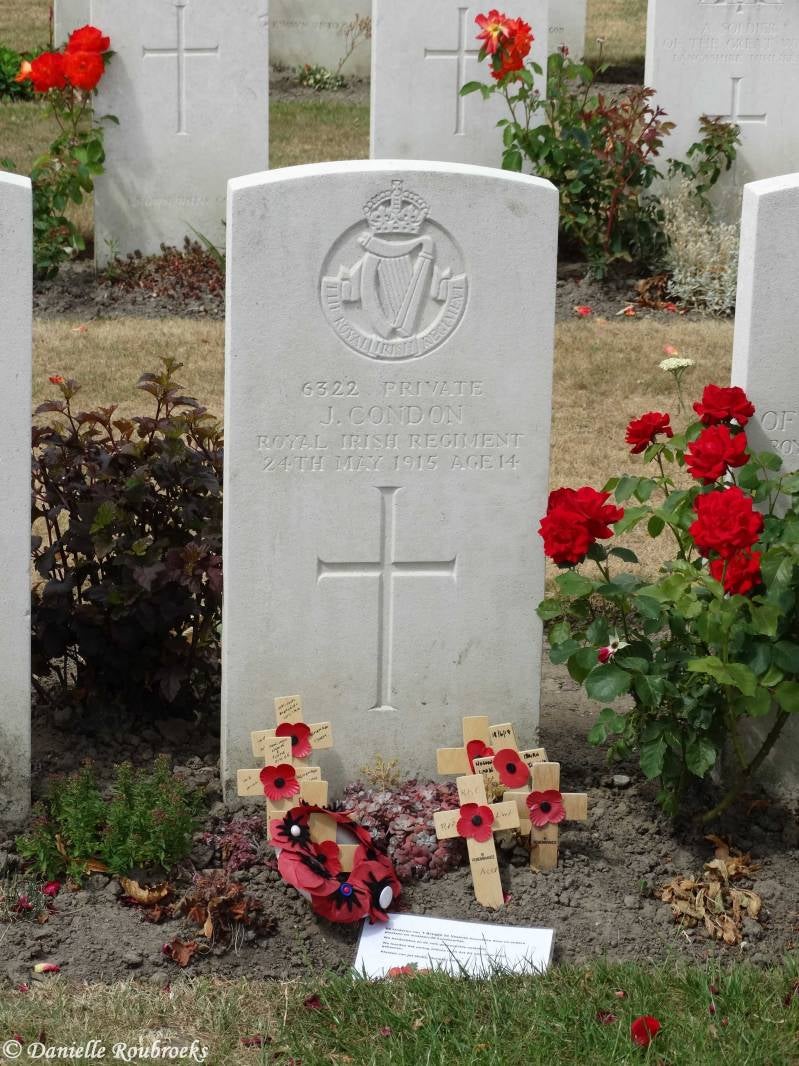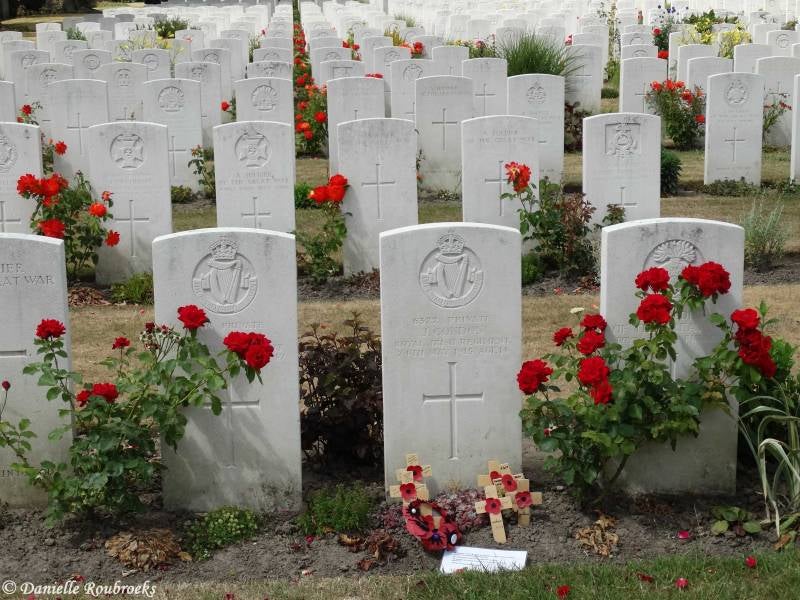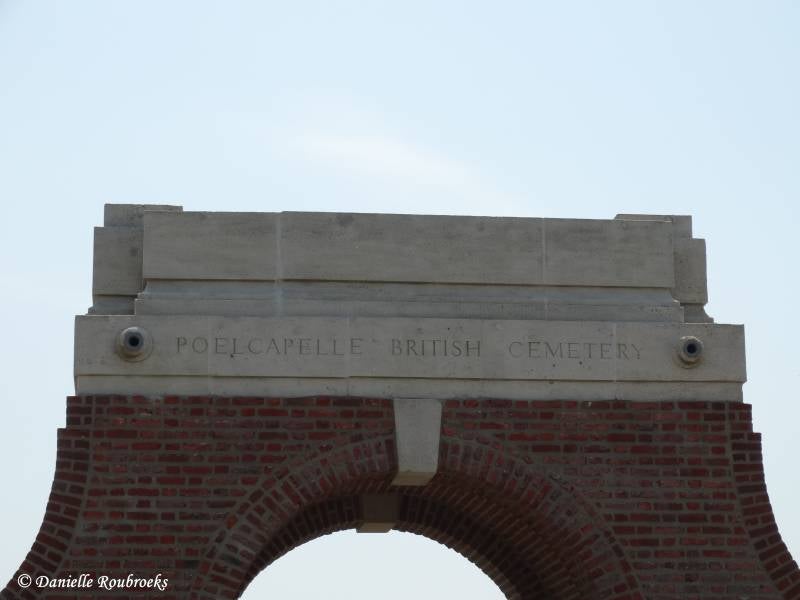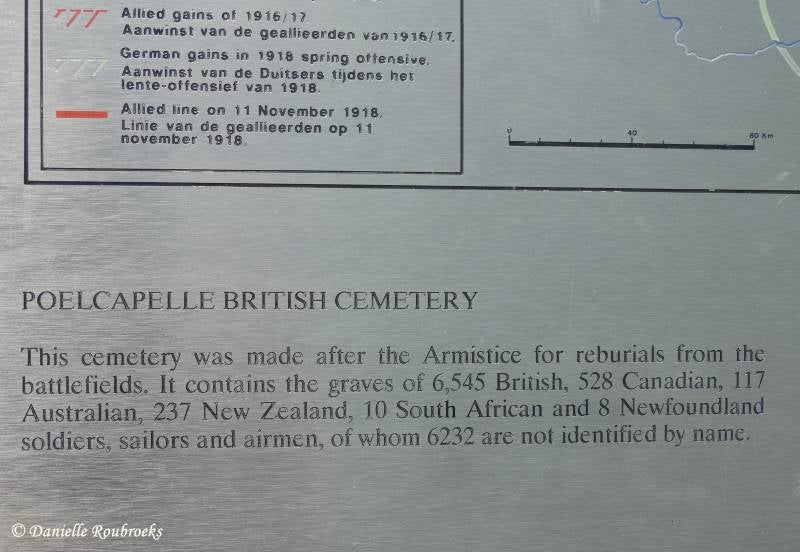Poelcapelle British Cemetery
Historical Information (Source: CWGC)
Poelcapelle (now Poelkapelle) was taken by the Germans from the French on 20 October 1914, entered by the 11th Division on 4 October 1917, evacuated by Commonwealth forces in April 1918, and retaken by the Belgians on 28 September 1918. Poelcapelle British Cemetery was made after the Armistice when graves were brought in from the surrounding battlefields and smaller cemeteries. The great majority of the graves date from the last five months of 1917, and in particular October, but certain plots (IA, VIA, VIIA, LI and LXI) contain many graves of 1914 and 1915.
There are now 7,479 Commonwealth servicemen of the First World War buried or commemorated in Poelcappelle British Cemetery. 6,230 of the burials are unidentified but special memorials commemorate 8 casualties known or believed to be buried among them. Other special memorials commemorate 24 servicemen buried by the Germans in other burial grounds in the area whose graves could not be located. There is also 1 burial of the Second World War within the cemetery. The cemetery was designed by Charles Holden.
Served with
· United Kingdom (1046)
· Canadian (117)
· New Zealand (46)
· Australian (38)
· South African (5)
Served in
· Army (1213)
· Navy (37)
· Air Force (2)
Memorial headstone for Second-Lieutenant Hugh Gordon Langton, killed on October 26, 1917, during the Battle of Passchendaele. The tomb of Langton is the only of all Commonwealth graves and memorials (and there are more than a million) on which musical notes stand as an epitaph.
Among those buried in the cemetery is Private John Condon of the Royal Irish Regiment, who at 14 is thought to be the youngest battle casualty of the First World War commemorated by the Commission.










































